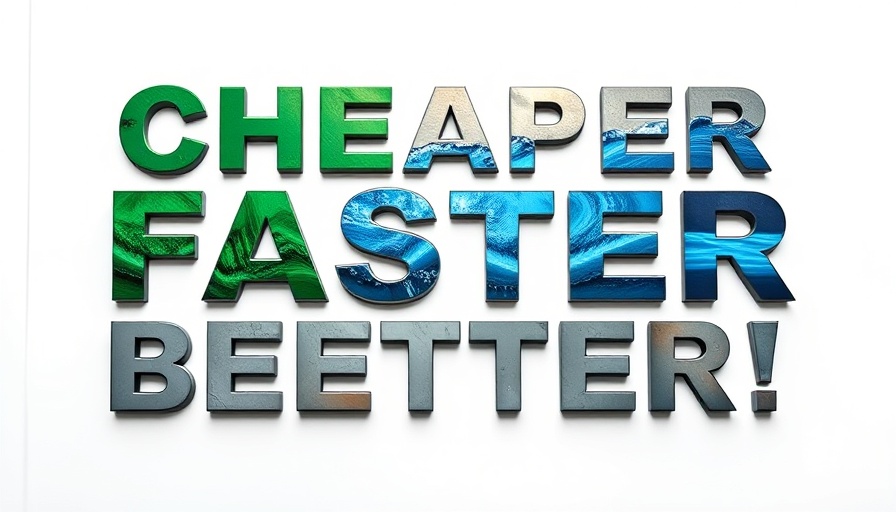
Cheaper, Faster, and Better: Revolutionizing the Climate War
In Cheaper Faster Better: How We’ll Win the Climate War, Tom Steyer presents not only an urgent plea for climate action but also a blueprint for leveraging capitalism to drive the clean-energy revolution. As investors, entrepreneurs, and small business owners navigate their own paths to sustainability, understanding Steyer’s perspective can inspire innovative thinking and practical application.
Why Entrepreneurs Should Care About Climate Solutions
Steyer emphasizes that the cost of inaction regarding climate change is exponentially higher than making the swift transition to renewable energies. As evidenced by the increase in billion-dollar natural disasters—rising from an average of seven annually in the 2000s to thirteen in the 2010s—a clear economic picture emerges. The financial toll on communities can stifle small businesses, making climate solutions not just an ethical responsibility but a smart business move.
Capitalism Meets Climate: The Five Plus One Approach
A key takeaway from Steyer’s book is his “five plus one” approach to reducing carbon emissions. Entrepreneurs should pay particular attention to Steyer’s focus on buildings—an area ripe for innovation. Retrofitting older structures can enhance sustainability while providing cost savings for businesses. In a world where 80% of buildings will still be standing by 2050, the call to action is clear: invest in green technologies now.
Environmental Justice: A Business Imperative
Another crucial point Steyer addresses involves environmental justice. Many marginalized communities bear outsized vulnerabilities to climate change impacts. For small business owners, this underscores the importance of inclusivity in sustainable practices. Emphasizing environmental justice can resonate with consumers and create brand loyalty, ultimately enhancing a business’s bottom line.
Investing in Tomorrow: Clean Technology
Steyer’s assertions that clean technologies will continue to become more affordable offer a silver lining for investors. Since 1977, the cost of solar panels has decreased by 99%, and similar price drops are anticipated for other renewable technologies. For entrepreneurs and investors, the take-home message is clear: investing in clean energy not only aligns with ethical considerations but also holds the potential for financial growth.
Act Now to Shape the Future
By following Steyer’s guidance and investing in sustainable practices, entrepreneurs stand at the forefront of a transformative movement. Small changes today can lead to substantial advancements in sustainability and profitability tomorrow. As Steyer concludes, achieving net-zero carbon emissions is an attainable goal if we collectively commit to transforming our economic practices.
Consider how you, too, can leverage these insights to ensure your business thrives while contributing to a healthier planet. The time for action is now.
 Add Row
Add Row  Add
Add 




Write A Comment